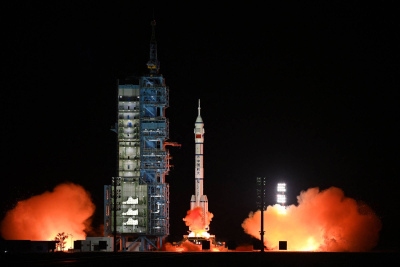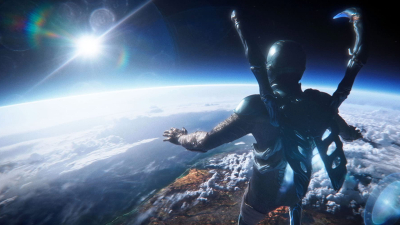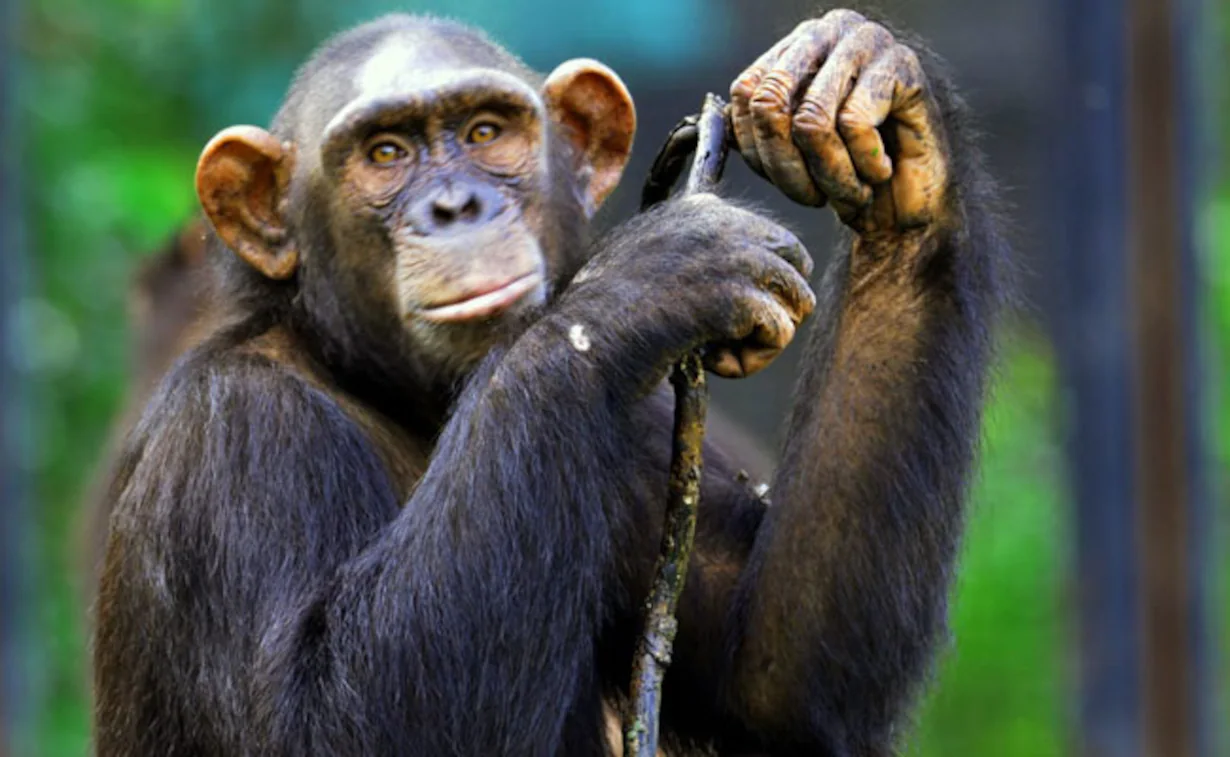
Space and Science: From the spectacular images dispatched by the James Webb Space Telescope and NASA’S ambitious missions to explore the moon to the breakthrough in malaria vaccine and the invention of the half-a-millimetre-wide remote controlled, walking robot, the year 2022 witnessed plenty of wow moments in Space and Science.
1. HD 1
In April 2022, we discovered the most distant galaxy to date. Christened HD 1, this galaxy is some 13.5 billion light-years away. To explain why the galaxy was unusually bright in ultraviolet light, the astronomers propose that either HD1 might be forming stars at a very high rate or may be home to a supermassive black hole. HD 1 could also be home to the Population III stars, the very first stars of the Universe. The discovery of HD 1 also breaks the record of the GN-Z11 galaxy that was discovered in 2017, lying some 13.4 billion light-years away.
The distant early galaxy HD1, object in red, is shown at the centre of this undated zoom-in handout image.
2. China’s space milestones
In 2022, China took a firm foothold in space with significant additions to its own space station called “Tiangong”. The space station will assist future Chinese missions and also help carry out scientific research and enable the stay of astronauts for longer periods in space. In July 2022, it launched its laboratory module called “Wentian”. The final piece “Mengtian”, also a laboratory module, was launched and docked, thereby completing the basic construction of its space station. It may be recalled that China began construction of its space station with the “Tianhe” module, the main living quarters for astronauts in 2021. Seen here is the Long March 5B rocket, carrying China’s Mengtian science module, the final module of Tiangong space station, lifting off.
3. James Webb Space Telescope
The James Webb Space Telescope, the largest and most powerful space telescope (launched in December 2021), has been dispatching stellar images of the universe since July 2022, propelling astronomical research in new directions. It has captured the farthest and oldest galaxies seen to date; offered a detailed image of the famous Pillars of Creation; presented the clearest view of Neptune’s rings, and captured the geographical phenomenon on Jupiter’s surface. It also gave us the first evidence of carbon dioxide in the atmosphere of an exoplanet – all this from its orbit around the second Lagrange point, a million miles away from Earth. Seen here is the detailed image of the Pillars of Creation shared by NASA’s James Webb Space Telescope.
4. DART mission
In a first-of-its-kind mission, NASA launched its Double Asteroid Redirection Test (DART) spacecraft successfully in September 2022. The mission aimed at deflecting asteroids was a step towards preparing the world for a potential future asteroid strike like the one which killed the dinosaurs millions of years ago. The first test DART mission targeted the asteroid moonlet Dimorphos, a small body about 160 metres in diameter. NASA confirmed the mission altered the asteroid’s motion in space. The one-way trip proved how a spacecraft could intentionally collide with an asteroid in order to deflect it – a planetary defence against near-Earth objects. The last image to contain a complete view of asteroid Didymos (top left) and its moonlet, Dimorphos, about 2.5 minutes before the impact of NASA’S DART spacecraft.
5. Women in space
The year 2022 was a milestone year for women astronauts. Nicole Mann became the first native American woman to go to space. She was the commander of NASA’s SpaceX Crew-5 mission that blasted off in the Dragon Endurance spacecraft built by SpaceX in October 2022. Jessica Watkins became the first Black woman on a long-duration ISS mission. Nora Al Matrooshi became the first woman astronaut from the UAE. She trained at the Johnson Space Centre in Houston. She is the Arab world’s first woman astronaut and has joined the second batch of the UAE Astronaut Program, training with NASA for future space missions.
6. Artemis
Half a century after astronauts walked on the moon, NASA is a few steps away from putting humankind back on the Moon. The Artemis 1 mission, launched on November 16, was an uncrewed mission designed to test the viability of the Space Launch System, NASA’s next-generation rocket ship, and the Orion Space Capsule scheduled to enter lunar orbit and return to Earth after about 25 days. Artemis 1 demonstrated the capabilities of both SLS and Orion. Its success has cleared the path for Artemis II and III in 2024 and 2025, when astronauts will embark on lunar-flyby-return-to-earth test missions. Seen here is the Orion Capsule, launched on the Artemis rocket, getting drawn into the well deck of the USS Portland during recovery operations.
7. ISRO’s major milestones
Indian Space Research Organisation (ISRO), the country’s space agency, hit many milestones in 2022. The agency launched India’s first privately developed rocket “Vikram-suborbital (VKS)” in November 2022. It also test-fired the Astronaut Safety System for India’s ambitious Gaganyaan mission- the country’s manned mission to space. The year 2022’s last PSLV mission blasted off with one ocean research satellite and eight nanosatellites by Indian start-ups and Bhutan. The 200th consecutive launch of the multipurpose sounding rocket RH200 was also held. The agency successfully launched 36 Gen-1 satellites via the LVM3 launch vehicle as part of its commercial mission for the U.K.-based communications company OneWeb. Seen here is ISRO’s first privately developed Indian rocket Vikram-S being launched from the Satish Dhawan Space Centre in Sriharikota.
8. Human Cell Atlas
In May 2022, about 2.300 researchers from 83 countries came up with a compilation called the Human Cell Atlas. The task involved mapping the positions of over a million cells across 33 different organs in the healthy human body. The aim of this international collaborative consortium is to help understand biology and diseases better. Cutting-edge single cell and spatial genomics and computational techniques were used. The compilation is seen as a major step towards analysing how illnesses can be diagnosed and treated. It is expected to eventually transform our understanding of the 37.2 trillion cells in the human body.
9. Monkeypox
In May 2022, another global health concern arose, when the viral disease Monkeypox was detected in the U.K Monkeypox is a viral zoonotic disease that has symptoms similar to those in smallpox patients. Come July and 90 percent of the cases were centered mainly around Europe. The World Health Organisation declared the monkeypox outbreak a Public Health Emergency of International Concern. Over the months, with testing, surveillance, and vaccination, cases declined. JYNNEOS, a two-dose vaccine that was developed to protect against both mpox and smallpox was used during the outbreak. Monkeypox was renamed Mpox by the WHO. Seen here is a magnifying glass focusing on a vesicle rash created by monkeypox disease.
10. World’s smallest remote-controlled, walking robot
In May 2022, a team of engineers at the Northwestern University in the U.S. demonstrated the world’s smallest walking robots. They measured just half-a-millimeter wide. The crab-shaped remote-controlled invention is a milestone in the field of robotics because they are capable of performing practical tasks in tight spaces. The micro robot, scientists say, could repair small machines and even offer help in performing surgical tasks such as clearing clogged arteries or eliminating cancerous tumours. They are still in developmental stage and were primarily created for academic purpose. Nevertheless, the technology used to create them has potential for scaling.
11. Earth’s shortest day on record
On June 29 2022, we had the shortest day ever to be recorded since the 1960s. The Earth completed its rotation in 1.59 milliseconds less than its routine 24 hours. Scientists recorded this using atomic clocks. In recent years, Earth has been spinning faster and taking less time to complete its rotation. A study in 2016 found that in the previous 2,740 years, Earth’s rotation slowed by about six hours. This truncation of day length is attributed to climate effects. The speed depends on factors such as gravity, changes in winds, ancient ice sheets, dynamics of the planet’s core, and so on.
12. Paper coating that behaves like plastic
Plastic is problematic. So, a team of researchers from the University of Japan developed a coating for the paper that makes it behave like plastic in July 2022. The coating, “Choetsu”, is claimed to be a cheap and safe mixture of chemicals. It makes the paper rigid, waterproof, bacteria-repelling, and durable. The initial target is to test its efficacy in food packaging. With the technology, paper is given some of the properties of plastic and is touted to degrade safely. The process involves dipping the paper structure into the coating mixture and drying it. The coating is low-cost and biodegradable.
13. Malaria vaccine breakthrough
In a major boost to the global fight against Malaria, one of the leading causes of child mortality, a new vaccine against the disease has been found to be highly effective. The scientists at the University of Oxford’s Jenner Institute who created the vaccine R21/ Matrix M published their trial results in September 2022. It is also the first malaria vaccine to meet and exceed the World Health Organisation’s (WHO) vaccine target of 75% efficacy against the deadly disease. The vaccine has been found to be 77% effective in early-stage trials. Malaria kills more than 4,00,000 people each year. Seen here is a feeding female Anopheles funestus mosquito, a known vector for malaria.
14. Zombie virus
A 48,500-year-old zombie virus that was trapped under a frozen lake in Russia emerged in November 2022. The zombie virus, which was revived by scientists, emerged as a result of global warming. According to the French scientists who published the study, the thawing of the permafrost a permanently frozen layer on or under – Earth’s surface-led to the release of the virus which was trapped and frozen for up to a million years. Scientists maintained that the zombie viruses are a health threat and that further studies need to be undertaken on the risk posed by ancient viral particles.
15. Nobel Prize for Science and Medicine 2022
Alain Aspect, John Clauser, and Anton Zeilinger were awarded the 2022 Nobel Prize for Physics in December 2022. Their work established the quantum property of entanglement. The trio worked independently and were awarded for their experiments with entangled photons, establishing the violation of Bell’s inequalities and pioneering quantum information science”. Meanwhile, geneticist Svante Paabo was awarded the 2022 Nobel Prize in Physiology or Medicine. The award was “for his research in the field of genomes of extinct hominins and human evolution”. Instituted by Swedish chemist Alfred Nobel, the Nobel Prize is presented to honour those from around the world for their remarkable achievements.
Picture Credit : Google





